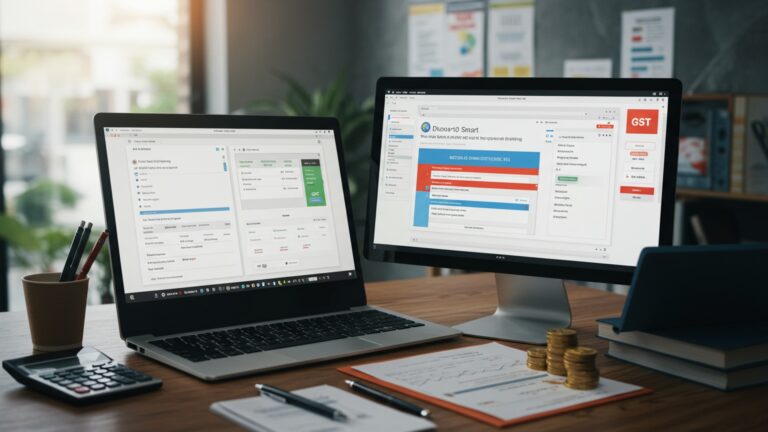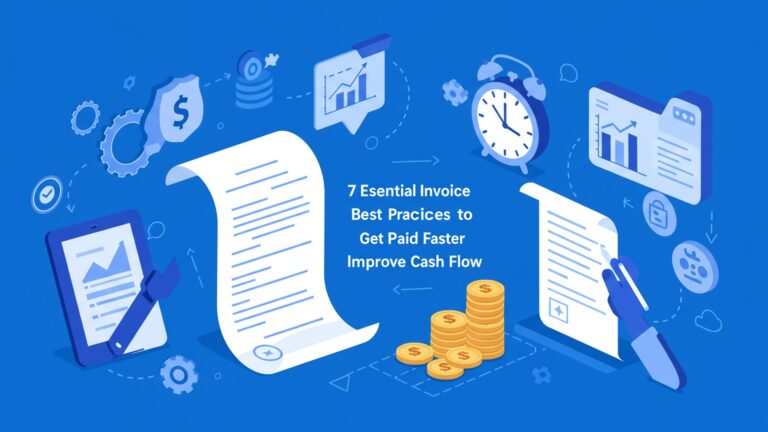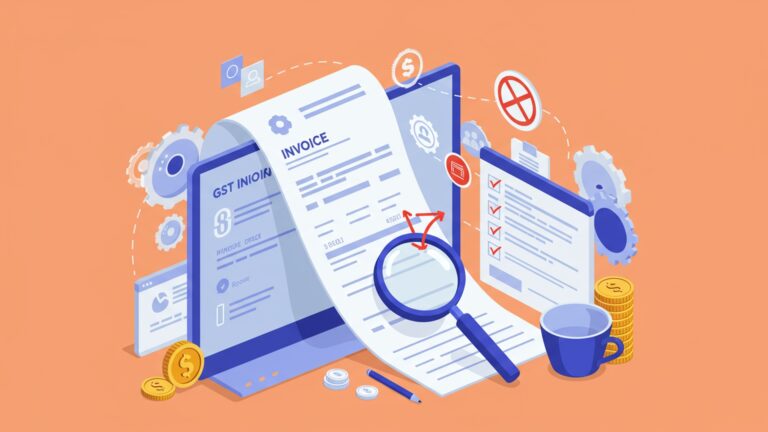7 Essential Strategies to Avoid Common Billing Errors and Save Money
In an era where digital transactions proliferate and subscription models dominate, the seemingly minor oversight of a billing error can silently erode profitability, costing businesses billions annually. Recent analysis indicates that even with sophisticated ERP systems and AI-driven invoicing, discrepancies like misapplied discounts, incorrect service tiers, or duplicated charges persist, often undetected until significant financial leakage occurs. Proactively addressing these systemic vulnerabilities moves beyond mere dispute resolution; it establishes a robust framework to prevent billing errors from the outset, safeguarding revenue streams against an increasingly complex transactional landscape and ensuring operational integrity in a competitive market.

1. Deciphering Your Bills: The First Line of Defense
One of the most fundamental steps to prevent billing errors and safeguard your finances is to truly grasp what you’re being charged for. Many people glance at the total amount, pay it. move on. But, bills, particularly from utility companies, telecommunications providers, or healthcare services, can be notoriously complex, filled with acronyms, codes. seemingly arbitrary charges.
- Service Period
- Usage Details
- Itemized Charges
- Taxes and Fees
- Promotional Rates/Discounts
Ensure the dates covered align with your expectations and previous bills.
For utilities (electricity, water, gas) or mobile data, check the consumption figures. Are they consistent with your habits? Unexpected spikes could indicate a meter reading error or a leak.
Look beyond the lump sums. Are there line items for services you don’t recognize or didn’t authorize? This is crucial for subscriptions or bundled services.
While often standard, sometimes erroneous taxes or surcharges can appear. comprehend what is typically applied in your region.
If you signed up for a specific promotion, ensure it’s being applied correctly and hasn’t expired prematurely.
Sarah, a small business owner, noticed her internet bill had jumped by $30. Upon closer inspection, she found a “premium support” service added that she had never requested. A quick call to her provider allowed her to remove the charge and prevent billing errors from recurring, saving her $360 annually.
To effectively prevent billing errors, you need to become an active participant in reviewing your financial statements, not just a passive recipient.
2. Implement a Regular Bill Review Schedule
Consistency is key when it comes to financial health. Simply understanding how to read a bill isn’t enough; you need to make reviewing them a routine. Establishing a dedicated time each month or week to go through all incoming bills can significantly help prevent billing errors from accumulating.
- Set Calendar Reminders
- Batch Processing
- Compare Month-to-Month
- Utilize Online Portals
Use digital calendars (Google Calendar, Outlook) to schedule recurring appointments for “Bill Review.”
Group bills by type (e. g. , utilities, subscriptions, credit cards) and tackle them in a single session.
Keep previous bills handy. A side-by-side comparison can quickly highlight discrepancies in usage, charges, or applied discounts.
Most providers offer online accounts where you can view detailed usage, payment history. even chat with support. These platforms are invaluable tools to prevent billing errors.
According to a 2022 survey by Consumer Reports, a significant percentage of consumers found errors on their bills when they took the time to review them. This underscores the importance of proactive, regular checks.
3. Maintain Meticulous Records and Documentation
Your personal financial archive is your best friend when disputing an incorrect charge. Detailed records provide undeniable proof and strengthen your position when communicating with service providers. This strategy is paramount to effectively prevent billing errors from becoming costly problems.
- Service Agreements/Contracts
- Correspondence
- Payment Confirmations
- Usage Logs
Keep copies of all signed contracts, including terms of service, promotional offers. cancellation policies.
Save emails, chat transcripts. notes from phone calls (date, time, representative’s name, summary of discussion, agreed-upon actions).
Retain receipts, confirmation numbers. bank statements showing successful payments.
If you track your own usage (e. g. , mileage for a car, data usage apps), keep these records.
John was charged for an extra month of a streaming service after he cancelled it. Because he had saved the email confirmation of his cancellation date and a screenshot of the “service cancelled” message on the provider’s website, he was able to quickly resolve the dispute and get a refund. Without these records, proving his case would have been much harder, costing him money and time.
Digital storage solutions (cloud services like Google Drive, Dropbox, or dedicated financial apps) make it easy to keep these documents organized and accessible.
4. interpret Your Contracts and Service Agreements
Before you sign up for any service, take the time to read and interpret the terms and conditions. Many common billing errors stem from a lack of awareness about contractual obligations, automatic renewals, or specific usage limits. This proactive approach is a powerful way to prevent billing errors before they even occur.
- Contract Length and Early Termination Fees
- Automatic Renewals
- Price Changes
- Data Caps and Overage Charges
- Bundled Services
Know when your contract expires and what penalties you might incur if you cancel early.
Many services default to auto-renewal. grasp how to opt out if you don’t want the service to continue.
Providers often reserve the right to change pricing after a promotional period or with notice. Be aware of these clauses.
For internet or mobile plans, know your limits and the cost of exceeding them.
If you’re getting a package deal, comprehend the individual components and what happens if you cancel one part of the bundle.
Financial literacy expert, Dr. Emily Thorne, often advises, “The fine print isn’t fine for nothing. It outlines the rules of engagement. Ignorance of these terms doesn’t absolve you of responsibility. understanding them empowers you to challenge unfair charges and prevent billing errors.”
5. Leverage Technology to Monitor and Manage Bills
In the digital age, a multitude of tools and applications can assist you in managing your finances and identifying potential billing discrepancies. Embracing these technologies can significantly streamline your efforts to prevent billing errors.
- Budgeting Apps
- Bill Pay Services
- Subscription Trackers
- Utility Monitoring Devices
Apps like Mint, YNAB (You Need A Budget), or Personal Capital can categorize your spending, track subscriptions. alert you to unusual transactions.
Many banks offer integrated bill pay features that allow you to schedule payments and keep a digital record.
Dedicated apps (e. g. , Truebill, Rocket Money) specifically identify and track recurring subscriptions, making it easier to spot forgotten services or unwanted renewals.
Smart home devices can track energy or water usage, providing real-time data that you can cross-reference with your utility bills.
Using a budgeting app, for instance, can help you visualize your recurring expenses. If a $50 subscription suddenly appears as $75, the app’s categorization and historical data will immediately flag it, allowing you to investigate and prevent billing errors from escalating.
6. Proactive Communication with Service Providers
Don’t wait for a problem to arise to interact with your service providers. Establishing a line of communication can help clarify charges, negotiate better rates. resolve potential issues before they become full-blown disputes. Effective communication is a powerful tool to prevent billing errors and maintain a healthy customer relationship.
- Before Signing Up
- When Rates Change
- For Usage Spikes
- When Disputing a Charge
Ask clarifying questions about pricing, contract terms. cancellation policies.
If you receive a notice of a price increase, call to comprehend why and if there are alternatives or ways to mitigate the increase.
If your utility bill shows unusually high usage, contact the provider to inquire about potential meter issues or leaks on their end.
Be prepared with your documentation (see Strategy 3) and clearly articulate the issue.
| Channel | Pros | Cons | Best Use Case |
|---|---|---|---|
| Phone Call | Direct conversation, immediate answers. | No written record unless you take notes, long wait times. | Complex issues, urgent inquiries, negotiation. |
| Email/Online Chat | Written record, convenient, can attach documents. | Responses may be delayed, less personal. | Non-urgent inquiries, formal disputes, documentation. |
| In-Person (if applicable) | Personal interaction, visual aids possible. | Time-consuming, limited availability. | Highly complex issues, local service providers. |
Always aim for a written record of essential communications. If you call, follow up with an email summarizing the conversation and the agreed-upon actions to solidify your evidence and prevent billing errors from being overlooked.
7. Know How to Effectively Dispute Billing Errors
Despite your best efforts to prevent billing errors, they can still happen. When they do, knowing the proper steps to dispute them can save you money, time. frustration. A structured approach is far more effective than an emotional outburst.
- Gather Your Evidence
- Contact the Provider Directly
- Escalate if Necessary
- Send a Formal Written Dispute
- Contact Regulatory Bodies
Collect all relevant documentation: the erroneous bill, your contract, payment confirmations. any prior communication with the provider.
Call or email their customer service or billing department. Clearly explain the error, referencing your documentation. Be polite but firm. Request a timeline for resolution and a reference number for your inquiry.
If the first representative can’t resolve the issue, ask to speak with a supervisor or manager. If still unresolved, inquire about their formal complaint or dispute resolution process.
For persistent issues, send a certified letter (return receipt requested) detailing the error, your desired resolution. attaching copies of your evidence. This creates a legally defensible paper trail.
If the provider remains uncooperative, you may need to escalate further. For telecommunications, contact the Federal Communications Commission (FCC) or relevant state utility commissions. For financial institutions, the Consumer Financial Protection Bureau (CFPB) is a resource. For general consumer protection, your state’s Attorney General’s office or the Better Business Bureau (BBB) can be helpful.
A reader shared how a credit card company repeatedly charged them for a service they had cancelled. After multiple calls failed, they sent a formal letter with copies of their cancellation confirmation and bank statements. This led to a full refund and an apology from the company. The key was the systematic approach and the robust documentation to prove the billing error.
Remember, being prepared and persistent is crucial when you need to prevent billing errors from costing you money. Your efforts to track and dispute errors effectively are a vital part of your financial advocacy.
Conclusion
Preventing billing errors isn’t merely about avoiding losses; it’s a strategic move towards building an unshakeable financial foundation for your business. By actively adopting integrated POS systems that offer real-time inventory synchronization and precise GST calculations, you gain an immediate advantage against common discrepancies. From my own experience, I’ve learned that a quick, periodic review of sales reports can flag potential issues, like incorrect discounts or misapplied taxes, saving significant amounts before they snowball. This proactive vigilance, a cornerstone of modern financial management, isn’t just about compliance with evolving regulations; it’s about embracing clarity. Take command of your billing processes today, transforming potential pitfalls into pathways for sustainable growth and enjoying the peace of mind that accurate financial records bring.
More Articles
5 Best Practices for Seamless GST Invoicing Learn to Avoid Common Mistakes
Learn How Smart POS Billing Software Boosts Business Efficiency
Your Complete Guide to Integrated Billing and POS Software
7 Essential Invoice Best Practices to Get Paid Faster and Improve Cash Flow
The Ultimate Guide to Understanding Essential POS Software Features
FAQs
Why should I even bother checking my bills? Isn’t it just a waste of time?
It might seem like a chore. regularly reviewing your bills is crucial! Many common errors, like incorrect charges, duplicate billing, or services you didn’t authorize, can slip through if you don’t check. Catching these early can save you a surprising amount of money over time and prevent bigger headaches later.
What specific types of billing mistakes should I actually look out for?
Keep an eye out for a few common culprits: duplicate charges, charges for services you cancelled or never received, incorrect rates or discounts, hidden fees, or even charges for someone else’s account. It’s also smart to compare your current bill to previous ones to spot unusual spikes or changes.
Is there an easy way to keep track of my spending so I can compare it to my bills?
Absolutely! One great strategy is to maintain your own simple records of services used, subscriptions. major purchases. You can use a spreadsheet, a dedicated app, or even just a notebook. This personal tracking makes it much easier to cross-reference with your official bills and quickly spot discrepancies.
Okay, so I found a mistake on my bill. Now what should I do?
Don’t panic! The first step is to gather all your relevant documentation – the bill itself, any contracts. your personal records. Then, contact the billing company’s customer service. Clearly explain the error, provide your evidence. ask for a resolution. Make sure to note down who you spoke to, the date. any reference numbers.
How can I stop these billing problems from happening again in the future?
Prevention is key! Before signing up for any service, make sure you thoroughly interpret the terms, conditions. pricing. Keep good records of all your agreements. Also, consider setting up alerts for usage limits if available. regularly review your statements, perhaps once a month, to catch issues proactively.
I have so many subscriptions. How can I manage them to avoid overpaying?
A smart move is to create a master list of all your subscriptions, including their renewal dates and costs. Periodically review this list and cancel any services you no longer use or need. Many people forget about old subscriptions, leading to recurring charges for unused services.
Beyond just saving money, what’s the real benefit of being so vigilant about my bills?
While saving money is a huge plus, being vigilant also gives you peace of mind and better control over your finances. It helps you grasp exactly where your money is going, prevents unexpected financial surprises. empowers you to advocate for yourself if an issue arises. It’s about financial health and awareness.






